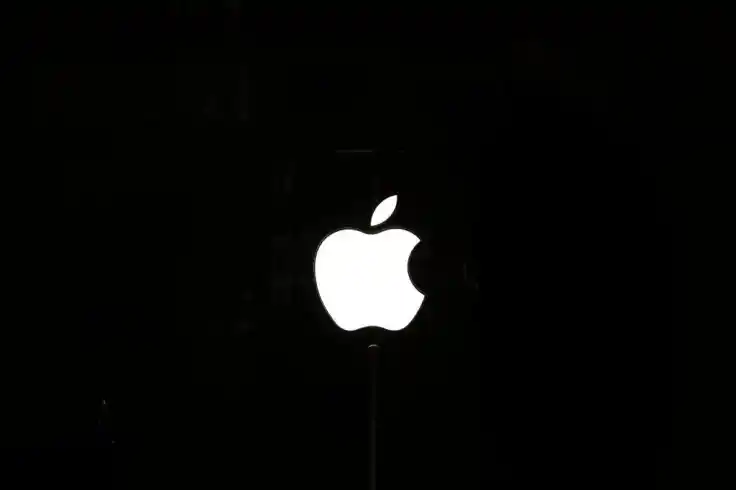When people think of Apple, gaming probably isn’t the first thing that comes to mind. iPhones, MacBooks, AirPods—sure. But gaming? Not really. And yet, slowly and methodically, Apple is moving pieces behind the scenes that suggest something bigger is brewing.
This isn’t about becoming the next PlayStation or Xbox. Apple doesn’t play that way. What they’re building is something different—something that stretches across hardware, software, and services. And while it might not look like a traditional gaming push, it might be one of the most strategic plays in the entire industry.
So what’s really going on? Let’s take a closer look.
It’s Not About the Console
First things first—Apple’s not going to release a console. That idea’s been tossed around in rumors for over a decade, but the company has shown zero interest in entering that lane. It doesn’t need to. It already has more than a billion active devices in people’s hands. That’s a distribution network Sony and Microsoft would kill for.
Apple doesn’t need a black box under your TV. It already owns your pocket. The iPhone is the most widely used gaming device in the world—more than the Switch, more than the PS5. And when you zoom out and add iPads, Macs, and Apple TVs to the mix, you’re looking at a hardware ecosystem that’s already embedded into daily life.
That’s Apple’s console. It just doesn’t look like one.
Apple Silicon Changed the Game
If there’s a moment where things truly shifted, it was with the launch of Apple Silicon. The transition from Intel processors to Apple’s own M-series chips wasn’t just about speed or efficiency. It was about control.
By designing its own chips, Apple gained the freedom to optimize performance across the board. Battery life went up. Thermals improved. But most importantly, graphics processing made a major leap.
Games that were once considered unplayable on a Mac now run smoothly. AAA titles that were Mac afterthoughts are being ported with better support. The gap is shrinking, fast.
When you look at the latest M4 chips, especially in the iPad Pro, it’s clear Apple isn’t just flexing for benchmarks. These are chips designed to handle complex real-time rendering and multi-threaded performance. They’re gaming-capable, even if Apple doesn’t shout it from the rooftops.
Apple Arcade Was a First Step—Not the Endgame
When Apple Arcade launched in 2019, it was met with curiosity but also skepticism. A subscription service for mobile games? No ads, no in-app purchases, just premium content? It sounded good on paper, but the catalog leaned heavily on indie-style experiences. Charming, but not system sellers.
Fast forward to today, and Arcade has matured. The quality of games is higher. Controllers are fully supported. Cross-device syncing means you can start a game on your iPhone and finish it on your iPad or Mac.
Still, Apple Arcade isn’t trying to be Xbox Game Pass. It’s not meant to compete on library size or raw hours of play. Instead, it’s about curation. Quality. Clean design. It’s what Apple does best—polish and consistency.
And here’s where it gets interesting: Arcade isn’t the destination. It’s the foundation.
Cross-Platform Play Is Already Happening
If you’ve played games like Resident Evil Village or Death Stranding on a Mac lately, you’ve already seen the shift. These aren’t just mobile ports or cloud-streamed versions. They’re full desktop-class games running natively on Apple hardware.
Developers like Capcom are optimizing their engines for Apple Silicon. That’s not just a favor—it’s business. The install base is growing. The tools are getting easier to use. Apple is investing in game porting kits, frameworks, and Metal graphics upgrades to make it viable.
You can connect a PS5 controller to your iPad. You can run console-level games on a MacBook Air. The lines are blurring. And while it’s not perfect yet, the trajectory is clear: Apple wants its devices to feel at home with mainstream gaming—no mods, no workarounds, just launch and play.
Vision Pro and Spatial Gaming
This is the wildcard. Apple Vision Pro isn’t a gaming device—at least not right now. It’s positioned as a productivity and media tool. But the underlying tech—hand tracking, spatial mapping, ultra-high-res displays—has huge potential for immersive gaming.
Right now, the catalog is limited. But remember how slow the iPhone App Store was at launch? It exploded when developers had time to explore the hardware. Vision Pro could follow a similar path.
The real promise here is that Apple is building a platform where gaming isn’t isolated. It’s integrated. It’s spatial. You’re not in a headset playing in a black void. You’re in your living room, moving between apps and games with the same UI logic. That’s a new model—and one Apple is uniquely positioned to pull off.
Developer Ecosystem Is Quietly Evolving
One of the biggest reasons Apple hasn’t been a gaming force historically is developer support. Game engines didn’t always play nicely with macOS. Tools were clunky. Performance was unpredictable.
But things are changing. Unity and Unreal Engine are offering better support. Apple’s own Metal API has matured into a serious graphics toolset. And new tools like Game Porting Toolkit 2 are helping studios bring Windows games to Mac faster than ever before.
The old complaints about porting difficulty are being solved—not loudly, but persistently.
If you’re a developer today, building for Apple devices isn’t the uphill battle it used to be. And once that resistance fades, the floodgates tend to open.
Apple Doesn’t Need the Hardcore Audience—Yet
Here’s the thing: Apple doesn’t need to convert console purists overnight. It doesn’t need to win over Steam users or pull people from their gaming PCs. That’s not the goal.
What Apple wants is to raise the floor. Make high-quality gaming experiences accessible to the people already in its ecosystem. It’s aiming for the casual and midcore crowd first—the players who would never buy a PS5 but might download Hades on their iPad.
And when those players get a taste of deeper, richer games? Some of them upgrade. Some of them subscribe. Some of them start calling their device more than just a phone.
So What’s Next?
That’s the million-dollar question. Apple doesn’t leak like other companies. We won’t know their full gaming ambitions until they’re ready to reveal them. But if you watch the moves, the picture starts to form.
- Hardware is ready.
- Services are in place.
- Developer tools are improving.
- Partnerships are forming.
- VR/AR is being tested in the wild.
All that’s missing is the big moment—the announcement, the feature spotlight, the launch title that makes people say, “Wait… Apple does this now?”
Maybe it’s coming in 2025. Maybe later. But it’s not a matter of if anymore. It’s when.
Final Thought
Apple has never done things the conventional way. It didn’t try to build a faster horse—it built a car. And that same mentality is showing up in how it approaches gaming.
This isn’t about fighting Sony or Microsoft on their turf. It’s about creating a new space entirely. One where games are part of your digital life—not a separate hobby, but another layer of the Apple experience.
And if you’re not paying attention? You might just miss the moment Apple becomes a gaming company without ever saying the words.

